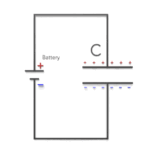Explore the RLC resonance frequency formula, its significance in electrical engineering, and a practical calculation example.
Understanding the RLC Resonance Frequency Formula
In the field of electronics, understanding resonance is crucial for designing circuits, filters, and oscillators. The RLC circuit, which consists of a resistor (R), an inductor (L), and a capacitor (C), is a fundamental component in electrical engineering. In this article, we will delve into the resonance frequency formula for an RLC circuit and explore its significance.
Resonance in RLC Circuits
Resonance occurs in an RLC circuit when the inductive and capacitive reactances become equal, causing the circuit’s impedance to reach its minimum value. At this point, the current flowing through the circuit is at its maximum, and the voltage across the inductor and capacitor is equal in magnitude but opposite in phase.
The RLC Resonance Frequency Formula
The resonance frequency formula for an RLC circuit is given by:
- f0 = 1 / (2π√(LC))
Where:
- f0 is the resonance frequency (in Hertz)
- L is the inductance (in Henrys)
- C is the capacitance (in Farads)
- π is the mathematical constant pi (approximately 3.14159)
This formula calculates the frequency at which the circuit exhibits resonance, allowing for efficient energy transfer between the inductor and capacitor. The equation indicates that the resonance frequency is inversely proportional to the square root of the product of the inductance and capacitance.
Significance of RLC Resonance Frequency
The resonance frequency in an RLC circuit plays a critical role in various applications, including:
- Band-pass Filters: These filters only allow a specific range of frequencies to pass through while attenuating the rest. The RLC resonance frequency formula helps in designing such filters by determining the center frequency around which the filter operates.
- Oscillators: Oscillators generate periodic signals and are essential components in communication systems. The RLC circuit can be used as an oscillator, with the resonance frequency formula guiding the selection of component values to generate the desired output frequency.
- Tuning Circuits: In radio receivers, RLC circuits are used for tuning to specific frequencies. The resonance frequency formula is vital for designing these circuits to ensure accurate reception of the desired signal.
In summary, the RLC resonance frequency formula is a fundamental equation in electrical engineering that helps determine the frequency at which an RLC circuit exhibits resonance. This information is vital for designing filters, oscillators, and tuning circuits, among other applications. Understanding the relationship between resonance frequency and the circuit’s inductance and capacitance is crucial for optimizing circuit performance and efficiency.
Example of RLC Resonance Frequency Calculation
Let’s consider an RLC circuit with the following component values:
- Inductance (L) = 100 μH (microhenries)
- Capacitance (C) = 10 nF (nanofarads)
Our goal is to determine the resonance frequency (f0) of this circuit. To do this, we will use the RLC resonance frequency formula:
- f0 = 1 / (2π√(LC))
First, we need to convert the component values to their base units:
- L = 100 μH = 100 × 10-6 H
- C = 10 nF = 10 × 10-9 F
Now, we can plug these values into the formula:
f0 = 1 / (2π√((100 × 10-6) (10 × 10-9)))
Calculating the values in the formula, we get:
f0 ≈ 1 / (2 × 3.14159 × √(10-3)) ≈ 159.15 kHz
Thus, the resonance frequency for this RLC circuit is approximately 159.15 kHz. At this frequency, the inductive and capacitive reactances are equal, resulting in maximum current flow through the circuit and efficient energy transfer between the inductor and capacitor.



